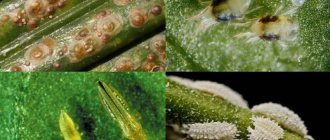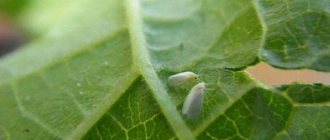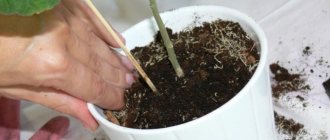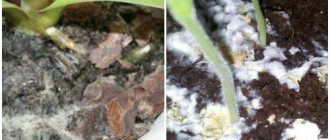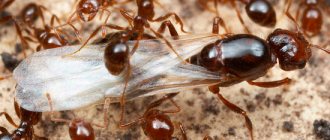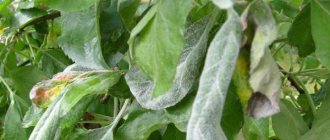Share on social media networks:
Growing vegetables, berries, and fruits with your own hands is not just the right attitude towards your own health, because as a result you can get a bountiful harvest from environmentally friendly fruits. For many, farming is also a kind of hobby, a pleasant and interesting vacation. The only thing that can sadden the owners of dachas and gardens is the appearance of pests, for example, the earthen fly, the fight against which causes a lot of trouble. There are different types of this insect that prefer to eat different crops. You will learn about what they are and how to effectively deal with them in this article.
Types of groundfly
Depending on what plants this enemy likes to feed on, the following types of ground flies are distinguished:
- carrot;
- onion;
- cabbage
Important! Each of them requires a special approach. So, if it is a carrot ground fly, the fight against it will be different from a flower fly or any other. For information on what effective methods exist for exterminating these pests and how to properly use certain drugs in the fight against earth flies, see below.
Varieties of midges in flowers and flower pots
Flower midges can be classified as insects of the Diptera family. They number about 2000 subspecies. Let's list the most common ones.
White midges on flowers - whiteflies, scale insects
White midges , called whiteflies or scale insects , look very similar to aphids. Among indoor plants in pots, soft leaves of fuchsia or begonia are preferred.
White midges on house flowers are whiteflies, also called “scale insects.”
Black midges in flowers - sciarids
Black midges living in home flowers are called sciarids , and another name for these parasites is fungus gnats . They prefer to live near the root system of flowers such as aloe, Decembrist, ficus, azalea. For humans, this type of insect creates considerable inconvenience in the apartment - it gets into food or drink. Settling in the soil where the flower grows, they make it dense and impervious to air, thus causing enormous damage to the roots of the plants.
Black midges on house flowers are called sciarids or fungus gnats
Ground fleas in flower pots - fools
Podura ( ground fleas - white flies ), the second name is springtails . These are jumping wingless parasites. You can see them in places where there is high humidity (the bottom of a pot, a wet tray, the top of the soil of a heavily watered flower). White larvae of podurs cause damage to plant roots. They differ from other parasites in their speed and jumping if someone wants to touch them.
White insects that are found in the soil of home flowers - podras or springtails
Carrot earth fly - fight
The carrot fly is one of the worst enemies of this healthy and tasty crop. What is typical is that one year you can see only a few individuals on your site, and the next year there will be a whole invasion of insects. What exactly is the reason for such a clear difference in the population is still unknown.
Important! This insect has a black body 5-7 mm long and transparent wings. The carrot fly lays its larvae deep in the root crops themselves, which in case of a large harvest are stored along with healthy vegetables. In the spring, the larvae wake up, gnaw their way out of the vegetable and begin to spoil your harvest and actively reproduce. Considering these factors, it is easy to understand that the earth fly is a malicious enemy, the fight against which must be quite cruel and effective.
How to identify a carrot fly?
Signs that your garden has been attacked by a ground fly, the fight against which must begin immediately, are the following changes in the plants:
- the leaves acquire a bronze tint, then red-violet, yellow;
- the plant withers and dies, despite the fact that you provided it with proper care;
- the fruits are thoroughly eaten and have a bitter taste.
Important! Such pests appear on the site in early May. Moreover, during the summer period it manages to lay multiple eggs several times.
Carrot earth fly - control, preparations
The modern chemical industry is making great strides in the fight against various types of pests. The ground fly was no exception. If you prefer to get rid of any unwanted “guests” in your garden as quickly as possible and are ready to use special preparations for this, the following will suit you:
- Zieper, K.E.;
- Decis Profi, VDG;
- Shar Pei, ME
- Arrivo, K.E.; Vega, K.E.;
- Inta-Vir, VRP;
- Aklellik, K.E.;
- Fitoverm.
Important! Spray only when the average daily temperature is not lower than 20C, only in the morning or evening. The concentration of each drug varies, so please read the manufacturer's instructions carefully before use.
Folk measures to combat carrot fly
If you decide to give up chemicals to combat earth flies, adopt the following folk methods:
- Sprinkle dry mustard or tobacco dust between the beds.
- Plant wormwood and yarrow nearby, and lay out tomato tops.
- Spray the green top with one of the following solutions:
- Garlic or onion tincture. To do this you will need 200g of vegetable and 2 liters of warm water. Pour finely chopped garlic or onion with water, leave for 1 day, strain, mix with 8 liters of water. If desired, you can add a little liquid soap.
- Pine tincture. Buy 200g of any pine needle extract and dilute it with 10 liters of water.
- Decoction of tomato tops. For this you will need about 4 kg of raw materials and 10 liters of water. Boil the tops in water for about half an hour after boiling and leave for 3 hours. The resulting decoction is mixed with water in a ratio of 1:3 before spraying.
Prevention of the appearance of ground carrot fly
To avoid attracting these pests, grow carrots correctly, adhering to the following rules:
- Do not apply fresh manure to the beds.
- Alternate beds of carrots and onions - the aroma of the second plant is extremely unpleasant for this fly.
- Sow the crop very early so that the seedlings have time to get stronger.
- Remove all thinned plants away from beds with growing carrots - the aroma of such shoots is very attractive to the females of this enemy.
- Use peat as mulch.
- Water the soil moderately, and in the period from late July to mid-August, save your time and abandon this procedure.
Important! By adhering to these rules, you will no longer be bothered by the carrot ground fly - the fight against it will be successful!
Application of insecticides
We suggest you familiarize yourself with effective special remedies for small flies in home seedlings, which it is advisable to use as a last resort:
- Mashenka's chalk is crushed and powdered on the ground.
- Fly-eater and Grom-2 powders will quickly destroy pests if you sprinkle granules on the soil and water it.
- Insecticides are used strictly according to the instructions supplied with them. After use, be sure to ventilate the room. The most popular of them are Inta-vir, Bazudin, Fitoverm.
- Universal means that will destroy flying flies and larvae are familiar aerosols: Dichlorvos, Reid and others. They spray the ground above and the air around.
You will be interested to know: Proven folk remedies for treating plants against aphids in the garden and vegetable garden
Before sowing seeds for seedlings, be sure to disinfect the soil so that there are no pests left in it. In the future, for preventive purposes, you need to water the plants moderately, regularly loosen the soil and properly fertilize the soil. Also try not to thicken the plantings. This is very important not only because of the threat of midges appearing in seedlings. Adequate light and nutrition is the key to the development of good and strong plants, on which the final harvest directly depends.
Ground onion fly - control methods
The onion fly annoys gardeners no less than the carrot fly, but it looks ash-gray and is about 1 cm in size. It begins to fly in May and actively lays its larvae under the upper scales of the vegetable, on the ground next to the plants, between the leaves. The larvae gnaw their way inside and literally eat the inside of the bulb, turning into new large and adult flies.
How to identify onion fly?
Pay close attention to how the plants develop. If you notice the following signs, it means that your vegetables are being eaten by a ground fly - the fight must be urgent:
- seedlings develop more slowly;
- the leaves acquire a yellow-gray tint;
- leaves dry out and wither;
- the bulbs are soft, rotting, and give off a foul odor.
Onion ground fly - control, preparations
In the case when you prefer to get rid of pests with modern chemicals, a product called “Bazudin” is suitable for you. It is used in the last 10 days of May.
Mode of application:
- Mix 30g of granules with sawdust in an amount of 0.5l.
- Add some sand.
- Distribute this mixture over an area of 20 m2.
Folk measures to combat onion fly
No less effective, but at the same time gentle for your garden, ways to combat this type of ground fly are as follows:
- Follow the rules of crop rotation - alternating planting crops from year to year.
- Plant onions and carrots next to each other - there will be a double benefit, since a fly that loves carrots does not tolerate the onion aroma, and vice versa.
- Water the onions with a saline solution prepared in a ratio of 200g/10l. Perform this procedure when the feathers grow 8 cm long.
- Dust the plants during the summer of the pest with a mixture of wood ash (200g), ground pepper (1 tsp), tobacco dust (1 tsp).
- Destroy the larvae with a tobacco solution, spraying it on the soil and the plants themselves. To prepare you will need 200g of tobacco dust or shag and 3 liters of hot water. After this mixture has steeped for 3 days, add another 1 tbsp. liquid soap and 1 tsp. ground pepper (black, red).
Cabbage ground fly - fight
The cabbage fly is a doubly unpleasant pest in the garden. If individuals of the previous 2 species are very selective in their diet, then this insect feeds not only on red, white and cauliflower. He also does not disdain radishes, turnips, radishes. It lays its larvae not only in May - there are later flies that develop their destructive activity only in July.
Important! The eggs hatch into white worms that eat not only the lower part of the stem to grow, but also the roots of the plants. If you ignore such “guests” in the garden, the earthen fly will destroy your entire crop.
Cabbage ground fly - control, preparations
To destroy such an enemy, proceed as follows:
- Plant all crops as early as possible.
- Hill up plants high.
- Sprinkle the beds with a repellent mixture: equal proportions of wood ash and tobacco dust (standard 100g each), ground pepper (1 tsp).
- Spray with a tobacco solution - the same as in the fight against the onion ground fly.
Important! An effective chemical for combating earth flies is “Phosbecid”. It is dissolved in a proportion of 5 ml per 10 liters of water and used in an amount of 100 ml per 1 m2. Use this remedy as early as May or early June.
Why are there small midges in indoor flowers?
It is important not to forget that excessively moist soil is the best place for midges to exist and reproduce. So, if you do not want to breed white bugs in the soil of indoor plants, then you should not neglect attention to the soil in pots.
The main source of reproduction of flower parasites is considered to be excess moisture in the soil of indoor flowers.
Secondary reasons for the appearance of harmful insects include:
- Pouring low-quality soil into flower pots. It leads to an invasion of harmful midges, the larvae of which will already live in the soil. As a result, you will need to quickly look for ways to get rid of the emerging parasites.
- The appearance of insects can be facilitated by transplanting plants into huge pots. The soil at the bottom of the flower pot is most saturated with moisture, only the root system of the plant does not reach there. High humidity is a suitable breeding ground for pests.
- The use of organic fertilizers will also encourage the appearance of bugs. Even if the soil is watered moderately, the presence of organic impurities will attract midges, which will settle well on the indoor plant.
- A fly can fly into an apartment from another living space, from the basement, through ventilation or an exhaust pipe. Moreover, the flying insects immediately find suitable flower pots with abundantly moistened soil.
